Pandemic Purges and Pickups
Sponsorship changes and industry juice.
We don’t want to wallow into the bleak outlook of the surf industry, but the past few months haven’t been overly kind to the individuals who pen “pro surfer” on their immigration forms. Not that many have been clearing customs recently, as professional surfers around the world are learning about what it’s like to live in their hometown year-round. For preternatural prodigies like John Florence or Kolohe Andino, they’ve never endured this much time at home, having spent virtually their whole lives traveling.
But along with more time to think at home, most people are trying to avoid picking up the phone from their sponsors because, in the age of Covid-19, the message on the other end hasn’t been great.
The slashing of surfer contracts has been thorough and widespread, from world champs to tour rookies to cultural icons on the fringe. Brands like Quiksilver, Rip Curl, Billabong, Hurley, RVCA, and Vissla have clipped their athlete retainers by 50% until further notice. This may sound harsh, but given that surf co’s sales have been significantly less than 50% of pre-COVID levels, we believe this is an honorable and even-handed commitment to their roster.
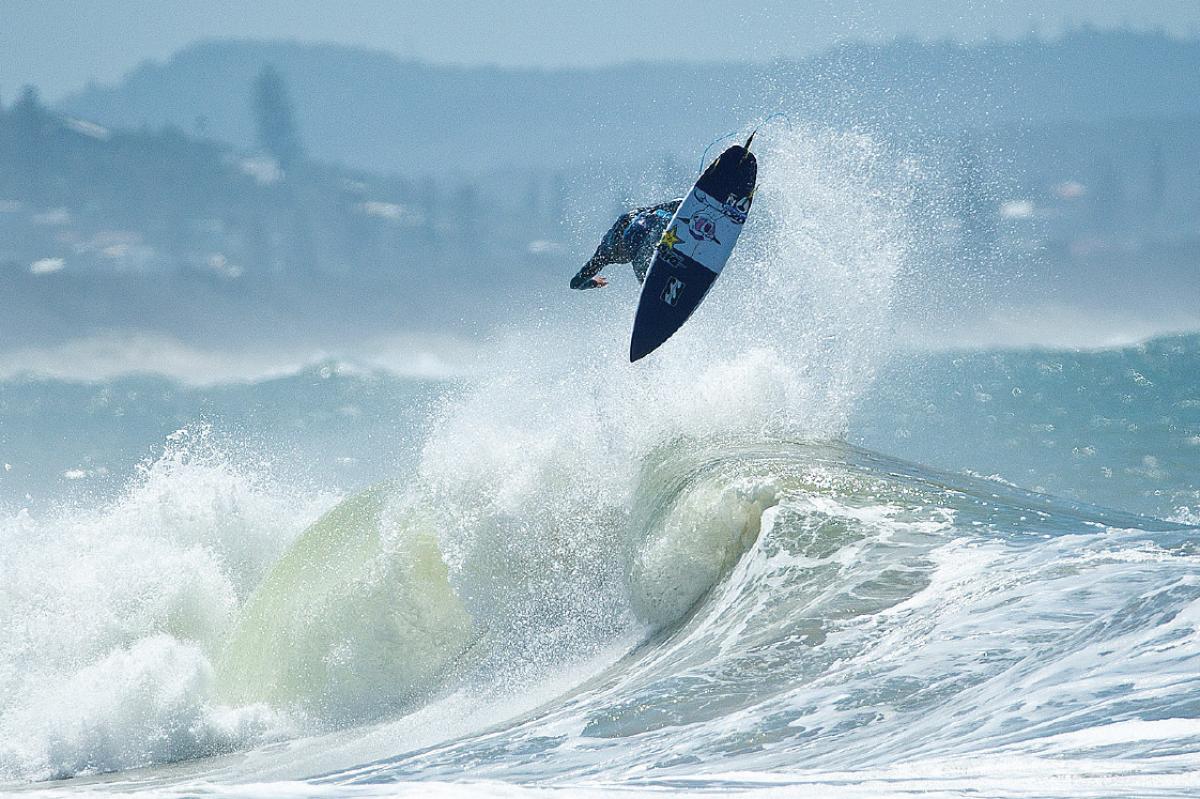
Some managers at the big end of town have gotten off their heels and onto their toes and renegotiated post-COVID deals well before a contract is due to expire. Mick Cain, who represents Noa Deane, just re-secured his deal with Volcom, locking him down until the end of 2023. Originally, this deal sat at $USD500k per year but our assumptions are that the contract has likely settled at around $USD300k annually.
Kolohe Andino and Filipe Toledo have both renegotiated their Hurley deals mid-contract. Under the guidance of his talented manager Mike Reagan, Filipe had signed a healthy five-year deal at the start of 2020. Given the state of the world’s economy, Filipe’s team renegotiated down to the $USD550k zone from what was previously closer to $USD650k (plus robust Tour incentives, which are obviously impossible to achieve right now).
Kolohe, whose 10-year deal was up at the end of 2021, also adjusted his Hurley salary immediately, knowing that competitive deals just aren’t out there right now. Brother has always had outstanding management and has made some of the savviest sponsorship decisions for the past two decades. His new deal sits at a base of around $USD550k this year followed by $USD500k in 2021, from a base that was previously $USD750k. What’s interesting is that Kolohe is only 26, so he’ll still be hot property for his next contract because he’s young enough to create a new image and profile with a different brand.
Unlike with Filipe, Hurley is not Kolohe’s primary sponsor. That lucrative nose and hat space are reserved for the Austrian liquid energy brand Red Bull.
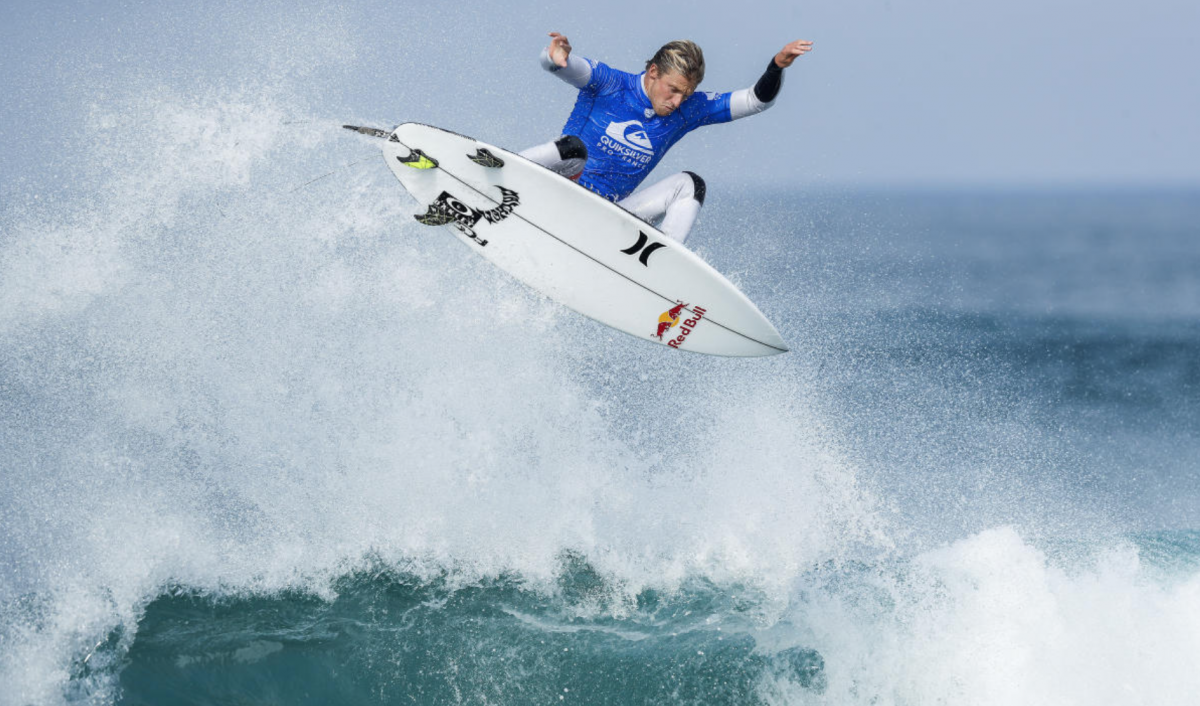
There are still some new deals being closed, too. Jordy Smith just inked a smallish deal with Airbnb as part of their Olympic partnership. Jords has similarly locked into a new deal with O’Neill that now expires at the end of 2023. His previous deal, set to expire at the end of this year, was north of $500k a year, with hefty bonuses paid for top-5 World Tour finishes. Holding an Olympics-sized negotiating card, Jordy worked a new deal that amortizes the bonuses owed and sits him comfortably for the next three years, at around $USD500k annually.
As a brand, O’Neill has always been big on legacy and heritage, and upper management was adamant about Jordy being a priority over new signings. Which is extremely handy with the bulk of the world’s pro surfers sending their CVs to O’Neill the past few months.
This would be of particular relief for Jords, as many have wondered in what brand camp John Florence was going to land. An obvious choice was to go back to O’Neill—the core and credible brand that John rode for throughout his adolescent life, before signing with Hurley at the end of 2012. Swinging for the still-without-marquee-sponsorship Florence would mean the sacrificing of other high earners for one landmark talent. O’Neill elected legacy and relationship over shiny new (old) toys.
John Florence’s next moves are still unknown. There was talk of John joining a new boardshort brand captained by Bob Hurley along with his sons, Ryan and Jeff. John left Hurley around the same time the Hurley family did, which was following Hurley’s purchase from Nike by Bluestar Alliance. Given the previous success Hurley has had in the boardshort category and the domain expertise of the Hurley family, a singular focus on boardshorts anchored by the world’s best surfer seemed like a sound business proposition. The brand name being floated around was called ‘Florence’, which is kinda ironic but clever given their last success was tied to their surname.
Rumors around the boardshort brand have more or less dissolved, as John won’t be joining the troupe. We reached out to Bob Hurley for comment: “As far as the speculation and rumours go… I’m not in a position to participate.”
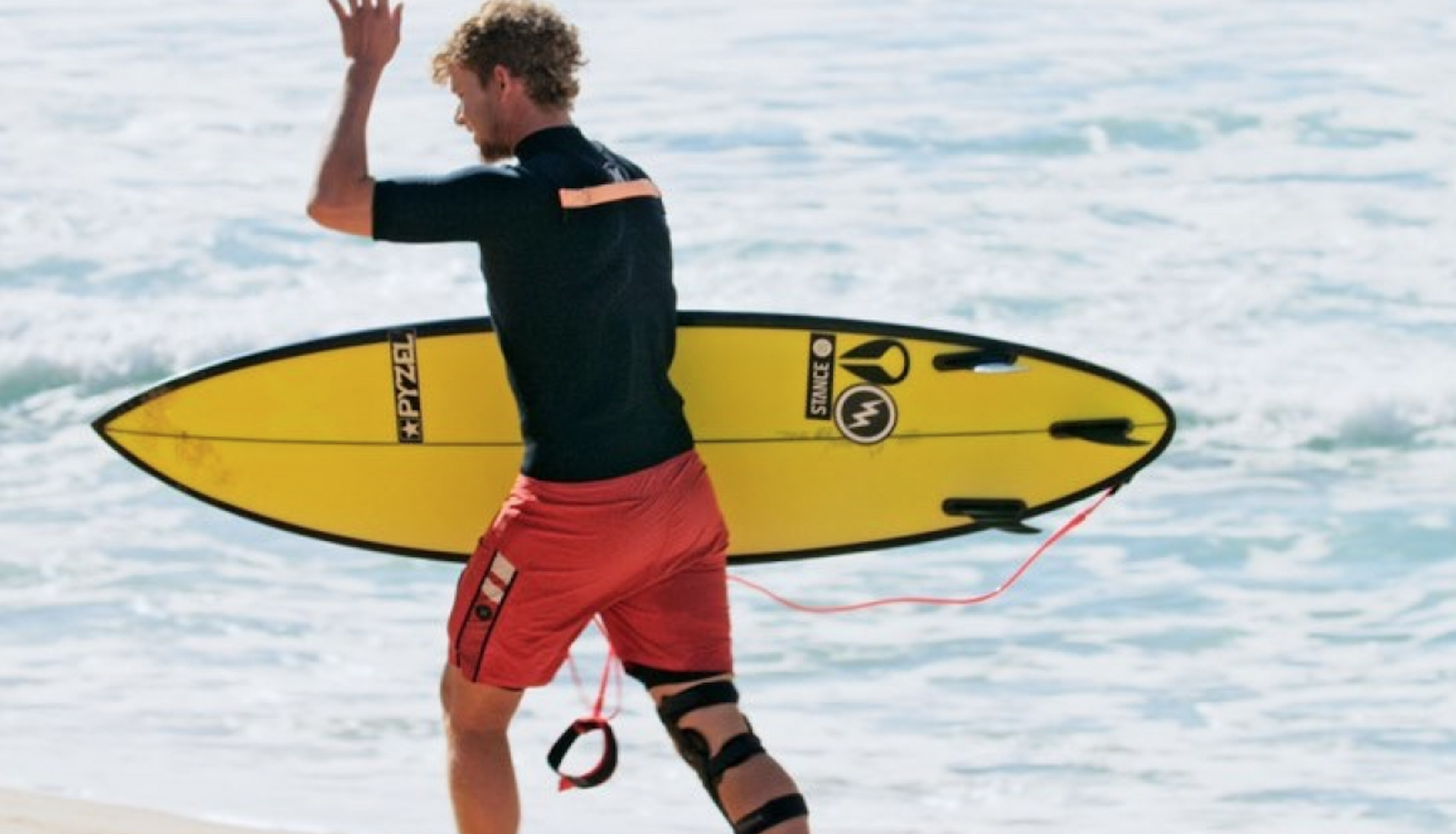
Some brands resonate with their team more like family. Not just because it’s coupled with a hashtag and the word “ohana”. One of those brands is Nixon—a home where team riders remain very close with the founders. When economic pain hit earlier in the year, contracts were reduced to 25% of their original sum to which every rider agreed without question. This week, we’ve learned that those deals will be at zero until the end of the year. At least. The proposed deal (which hasn’t been finalised) will presumably state that you can ride-for-product until the end of December when the brand can triage the business wounds caused by COVID. The assumption is that most of the team will now peel stickers from their waveriding vessels.
In the Hot Grom end of town, numbers have similarly plummeted. Deals that pre-COVID were locked in the $75k to $85k range are washing out at $20k and $25k. “There isn’t much incentive to try to make it as a pro surfer,” said one manager. “You’re probably better off to hit the tools and get your career happening sooner than later. What do you do if you’re a guy on fire? Someone like Dakoda Walters, who won pretty much everything in Australia last year would be on $300k a year if it were 10 years ago. What does he do?”
Ironically, that’s what 19-year-old Australian Caleb Tancred did at the end of 2019. Just a few weeks earlier, Australia’s Surfing Life magazine crowned Caleb the best junior surfer in Australia by topping their annual Hot 100 list, which has most notably been won by surfers like Mick Fanning, Taj Burrow, and Julian Wilson. Before approaching negotiations with Hurley, Caleb prefaced the meeting with the following: Thank you for the support, I’m gonna ditch the pro surfing thing and study at university.
The pair departed amicably and swiftly.
Another surfer facing the same crossroads is Kai Hing, who was recently dropped by Billabong. Kai’s a hard-working, gifted, and inspired surfer, but he’s come up against heavily stacked team rosters, being deep in the Hurley mix at the peak of their superstars and then swapping to Billabong to again struggle to get the oxygen from heavyweights like Seth Moniz, Griff Colapinto, and Ethan Ewing. A clipping like this is unfortunate but inevitable.
For a surfer like Liam O’Brien, this is a stark reality. He still sits on the Billabong team and a handsome 7th on the WQS, but his meagre $20k a year contract has been cut in half until further notice. Anyone who has seen him straddle a surfboard will attest that he’s the real deal. However, in a post-Covid world, what is a real deal anymore? Impressively, he’s studying for an engineering degree in parallel so he’ll have options, however, we predict he’ll own a spot on the world tour before he’ll be designing bridges.
Having traveled the world for over a decade breaking lips and hearts, Jay Davies saw his once-six figure contract with RVCA move to a more pedestrian $5k per month at the start of 2020. Rather than whine, Jay told RVCA he would balance out chasing waves and working on a film project by supplementing his income outside of surf. In a role that couldn’t be any more fitting-cliche, the dark-eyed, salt-and-pepper West Australian bruiser is now driving tug boats off Perth in Western Australia.
When COVID hit, the original deal Jay had negotiated evaporated, meaning he’s no longer with RVCA. He’s at least got his neoprene needs covered by local brand West, who’ve made a resurgence (also recently signing Taj Burrow) since their 90s heyday.
An understated talent with an outsized impact on Stab’s analytics, Jay owns one of the broadest ranges of any plus-sized surfer operating, Jay enters the market as a wildly marketable bargain in an admittedly saturated buyer’s market.
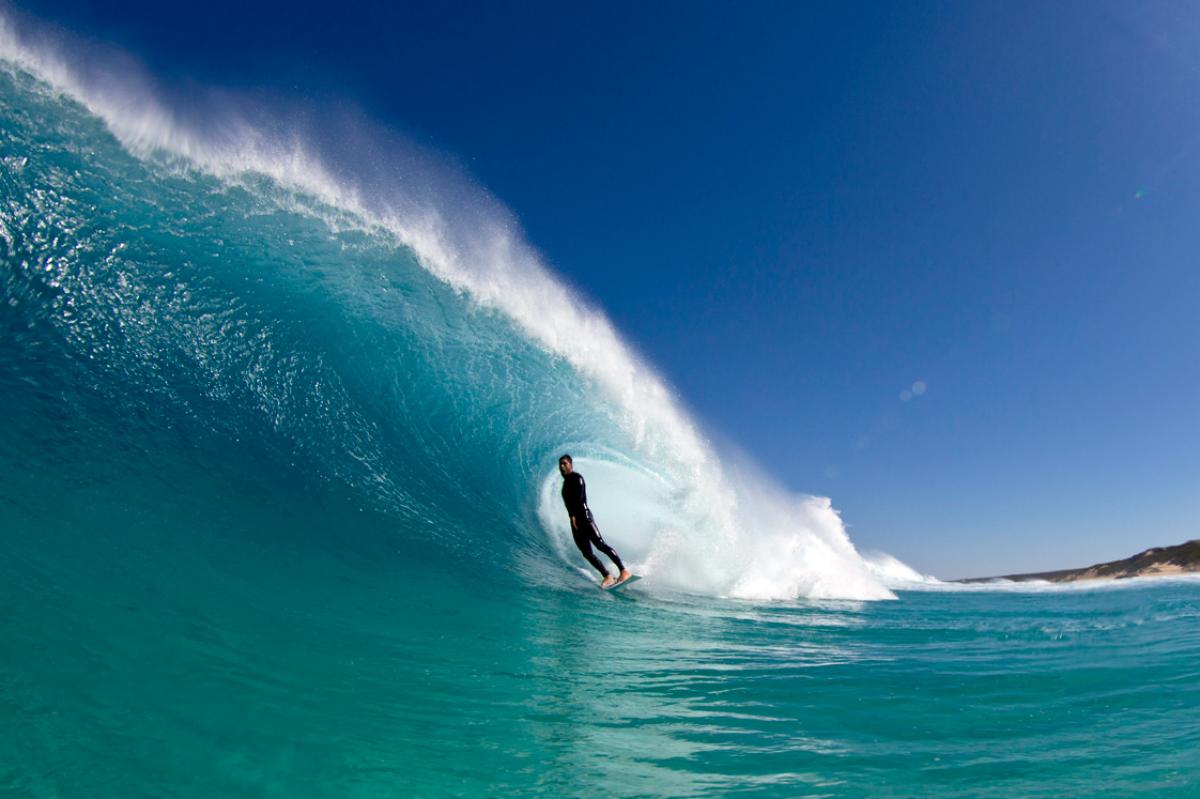
And now, for some good news…
Stab’s former neighbors at our Bondi bureaux M/SF/TS have struck up a new deal with Mitch Coleborn following his departure from Volcom and Chilli surfboards. Mitch came of age as a star of Kai Neville’s films during Kai’s peak influence. He experienced the pinnacle of surf deals, copping multiple annual salaries in the $500k region.
M/SF/TS’ profile has grown over the last few years with support from their relationship with Globe and their proximity to brands like Stussy and Thrasher within their Australian distribution. Mitch’s party-boy vibe is a glove-tight fit for M/SF/TS.
As mentioned, Vissla has cut its team salaries by 50%. However, that wasn’t the reasonfine artist and woodworker, Jay Nelson, the man responsible for their instantly recognizable “Dream Steeple” van left Vissla. San Francisco-based Mollusk has quietly built a successful apparel program. They’ve managed to establish more than a cult following, as well as a handful of iconic flagships, opening a new Santa Barbara store shortly. They’ve also added the stylist Trevor Gordon to the books.
With the surf industry well drying up, surfers may have to go the way of Medina, locking in contracts with major, non-endemic brands, who have the longevity and muscle to support a modern surf career. Recently, two of Stab readers’ favourite sons, Mason Ho and the recently-betrothed Jack Robinson, have reportedly been approached by the folks behind the video game Fuser (which is basically a DJ-specific version of Rock Band, made by the same company) about a potential deal.
The deal isn’t on royalties but a straight-up endorsement deal: A sticker both sides of the surfboard, posting on the Instagram grid and stories, the usual commitments.
This deal, if it happens, comes as an indirect result of Snapt4—a surf film in which both Mason and Jack will star sometime in 2021—which is also supported by Fuser. We estimate this deal will sit at around $USD50k annually, apiece.
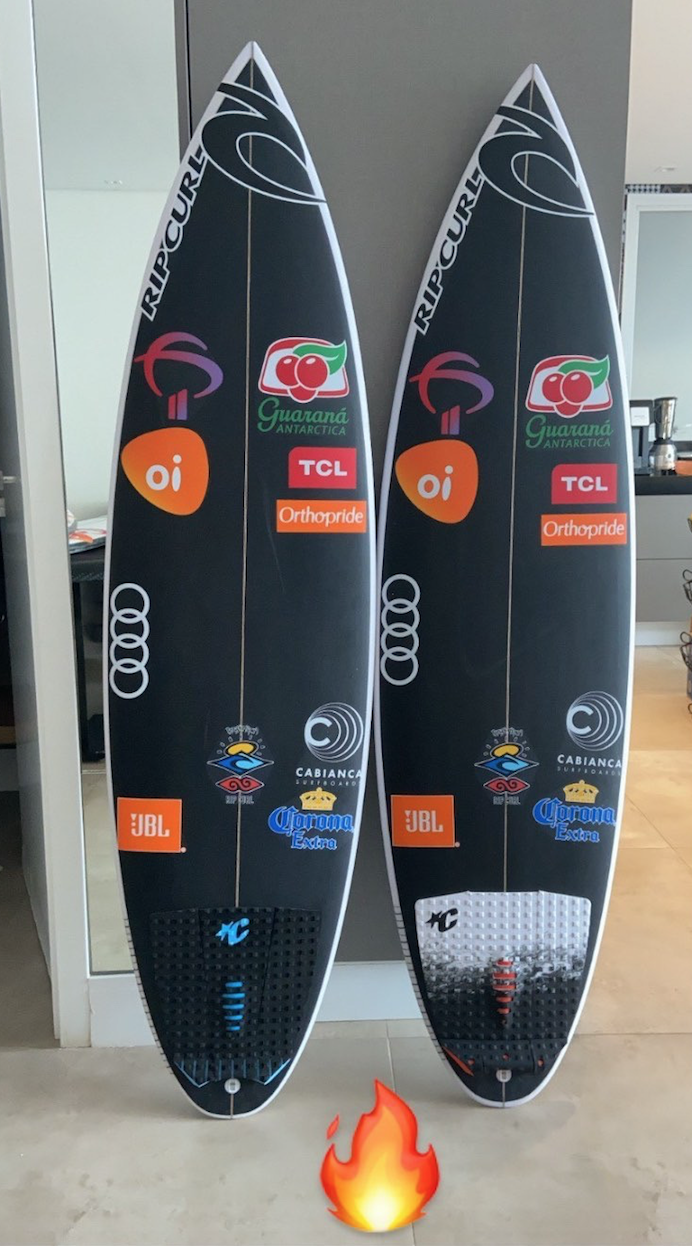
Astute surf enthusiasts will note that Gabe Medina won the Billabong Pro at J-Bay in 2019 using a Mick Fanning-signature Creatures of Leisure pad. So, here’s how this came about: Gabe previously rode for FCS for accessories and fins. When his contract expired in 2019, he committed to riding FCS fin tech but left the accessories part of the contract.
As you know, Creature of Leisure is part-owned by Gab’s Rip Curl teammate and good pal Mick Fanning. So, Mick slung Gabe some tailpads, Gabe liked ’em and wanted more. Mick put Gabe in touch with Creatures and the flow continued. What’s interesting is that Gabe only wants the Mick pads over the rest of the range, which predictably, is also Creatures’ highest-selling tailpad of all time. Stab asked Creatures whether Gabe has ever asked for a commercial arrangement? “Nah, he’s never even asked. He seems happy with flow,” said Beau Campi, Creatures head designer.
Considering he is the most popular surfer in the world with 8.4m followers on Instagram, the ease at which he could wrangle a simple $2k to $3k a month deal with an accessories brand is equally as perplexing and impressive that he elects not to.
What’s a drop in the bucket anyway?
Note: a previous version of this article incorrectly stated that Filipe Toledo negotiated down to ~$300k on his Hurley contract.














Comments
Comments are a Stab Premium feature. Gotta join to talk shop.
Already a member? Sign In
Want to join? Sign Up